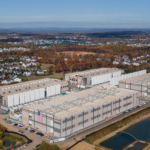Granted, the median annual pay of about $35,000 isn’t the dream salary for most Gen Z workers. Still, the barrier to entry is low—requiring only a high school diploma and short-term on-the-job training—and the sector’s stability offers something rare in an uncertain labor market. And while it might not be glamorous, it provides a foothold in one of the few industries largely insulated from automation.
And unlike home health aides, many healthcare jobs come with substantial paychecks.
Other job titles, including physician assistants, nurse anesthetists, and health services managers, offer similar perks: high pay, job security, and upward mobility.
As AI continues to reshape the workplace and threaten millions of white-collar jobs, healthcare stands out as one of the safest sectors.
“If you could make doctors five times as efficient, we could all have five times as much healthcare for the same price,” he added. “There’s almost no limit to how much health care people can absorb—[patients] always want more healthcare if there’s no cost to it.”
“There’s a lot of things that we won’t want to do with a machine,” he said. “You wouldn’t want a robot nurse—there’s something about the human empathy aspect of that care that’s particularly humanistic.”









